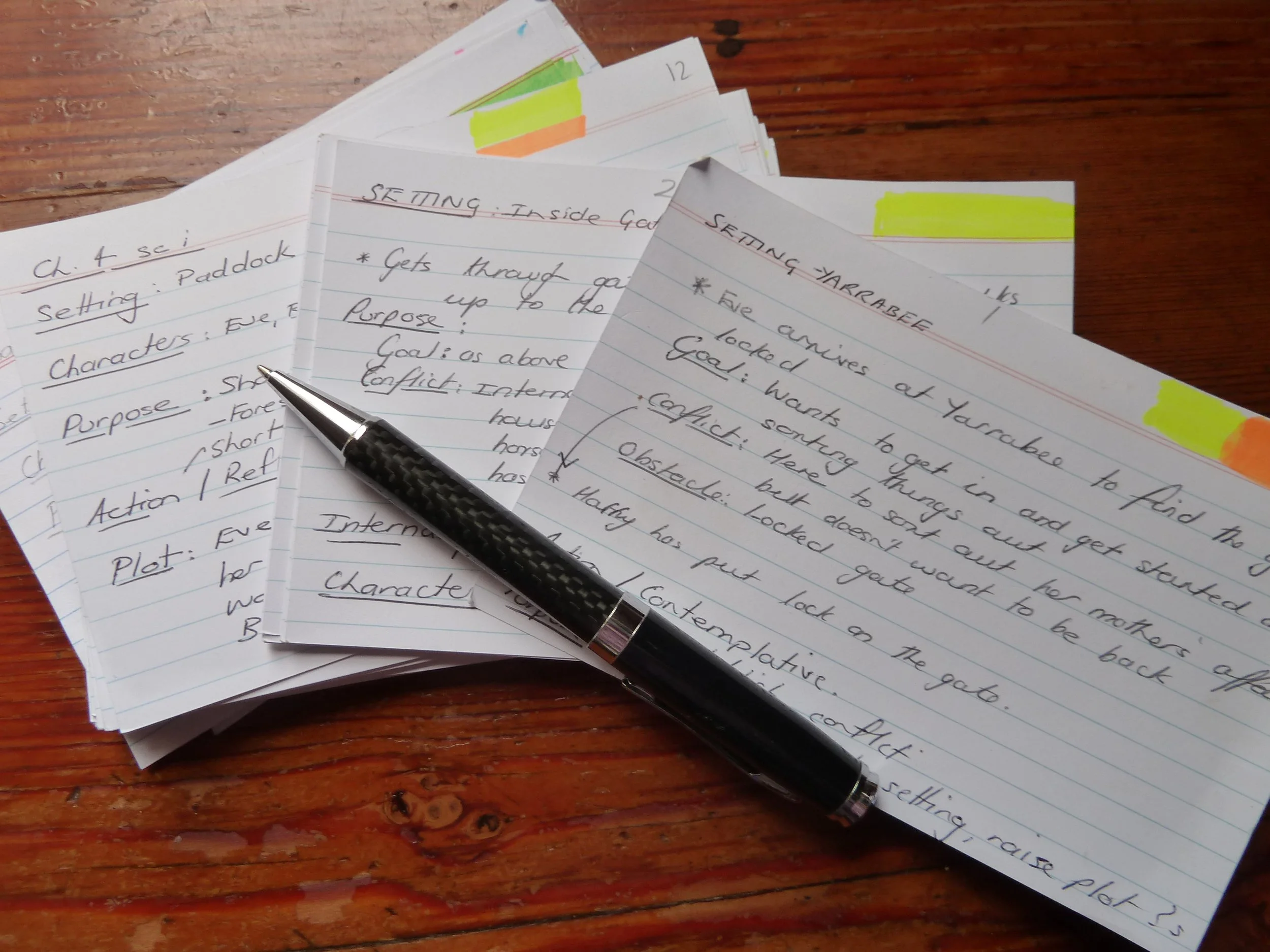Scene Mapping
 This week I've been working on the scene map for my novel. For those of us who are directionally challenged, even in the writing areas of our lives, scene mapping can be a great way of navigating the sometimes nerve-wracking path to revision.I've been working on this process with a nano novel I churned out almost two years ago. Writing 50,000 words in a month (www.nanowrimo.org) is a great way to get a story onto the page but it obviously is only the beginning of the journey. Some nano's are doomed to remain locked in the Never To Be Read file on your computer but others will definitely stay with you and scream out to be nurtured and refined, like my current work-in-progress.Scene mapping helps you identify and iron out plot holes, work out where additional scenes need to be added, track character development, create more variety in the types of scenes you are including and avoid repetition. It also helps you to divide your chapters into chunks that can be written one at a time but are clearly inked to what has come before and what follows.So here's my scene-mapping technique:1) After reading through your entire manuscript work through it chapter by chapter with a pile of index cards and a pen.2) For each scene identify the following:* Chapter and scene number* Setting* Characters (in this particular scene)* The purpose of the scene (Is it advancing the plot or adding to character development? If it's not doing one or both it should be cut.)* The type of scene - dialogue, action, reflection, flashback, description. If you have too many of one type of scene you will need to consider making changes.* The goal of the protagonist in this scene - what does he/she want?* The obstacle that is going to stop the protagonist reaching that goal. Once this happens the story is over.* Where conflict or tension comes from in this scene.* A dot point summary of the plot.If you want to take it one step further you can colour code your cards using highlighters to identify the types of scenes and make sure there's not too much of one colour.Where you find gaps in the plot add cards with details of new scenes and slot them in where you think they should be.As with everything in the revision process don't get anal about sticking to your scene map word for word. Allow room for changes in direction but use the cards as guidelines and work through your revision one scene at a time.Before you knowing it you'll have revised a few scenes then a few chapters and then the entire book.And then it'll be time for the next revision.I'd love to hear your suggestions for scene mapping, and other revision strategies.
This week I've been working on the scene map for my novel. For those of us who are directionally challenged, even in the writing areas of our lives, scene mapping can be a great way of navigating the sometimes nerve-wracking path to revision.I've been working on this process with a nano novel I churned out almost two years ago. Writing 50,000 words in a month (www.nanowrimo.org) is a great way to get a story onto the page but it obviously is only the beginning of the journey. Some nano's are doomed to remain locked in the Never To Be Read file on your computer but others will definitely stay with you and scream out to be nurtured and refined, like my current work-in-progress.Scene mapping helps you identify and iron out plot holes, work out where additional scenes need to be added, track character development, create more variety in the types of scenes you are including and avoid repetition. It also helps you to divide your chapters into chunks that can be written one at a time but are clearly inked to what has come before and what follows.So here's my scene-mapping technique:1) After reading through your entire manuscript work through it chapter by chapter with a pile of index cards and a pen.2) For each scene identify the following:* Chapter and scene number* Setting* Characters (in this particular scene)* The purpose of the scene (Is it advancing the plot or adding to character development? If it's not doing one or both it should be cut.)* The type of scene - dialogue, action, reflection, flashback, description. If you have too many of one type of scene you will need to consider making changes.* The goal of the protagonist in this scene - what does he/she want?* The obstacle that is going to stop the protagonist reaching that goal. Once this happens the story is over.* Where conflict or tension comes from in this scene.* A dot point summary of the plot.If you want to take it one step further you can colour code your cards using highlighters to identify the types of scenes and make sure there's not too much of one colour.Where you find gaps in the plot add cards with details of new scenes and slot them in where you think they should be.As with everything in the revision process don't get anal about sticking to your scene map word for word. Allow room for changes in direction but use the cards as guidelines and work through your revision one scene at a time.Before you knowing it you'll have revised a few scenes then a few chapters and then the entire book.And then it'll be time for the next revision.I'd love to hear your suggestions for scene mapping, and other revision strategies.
